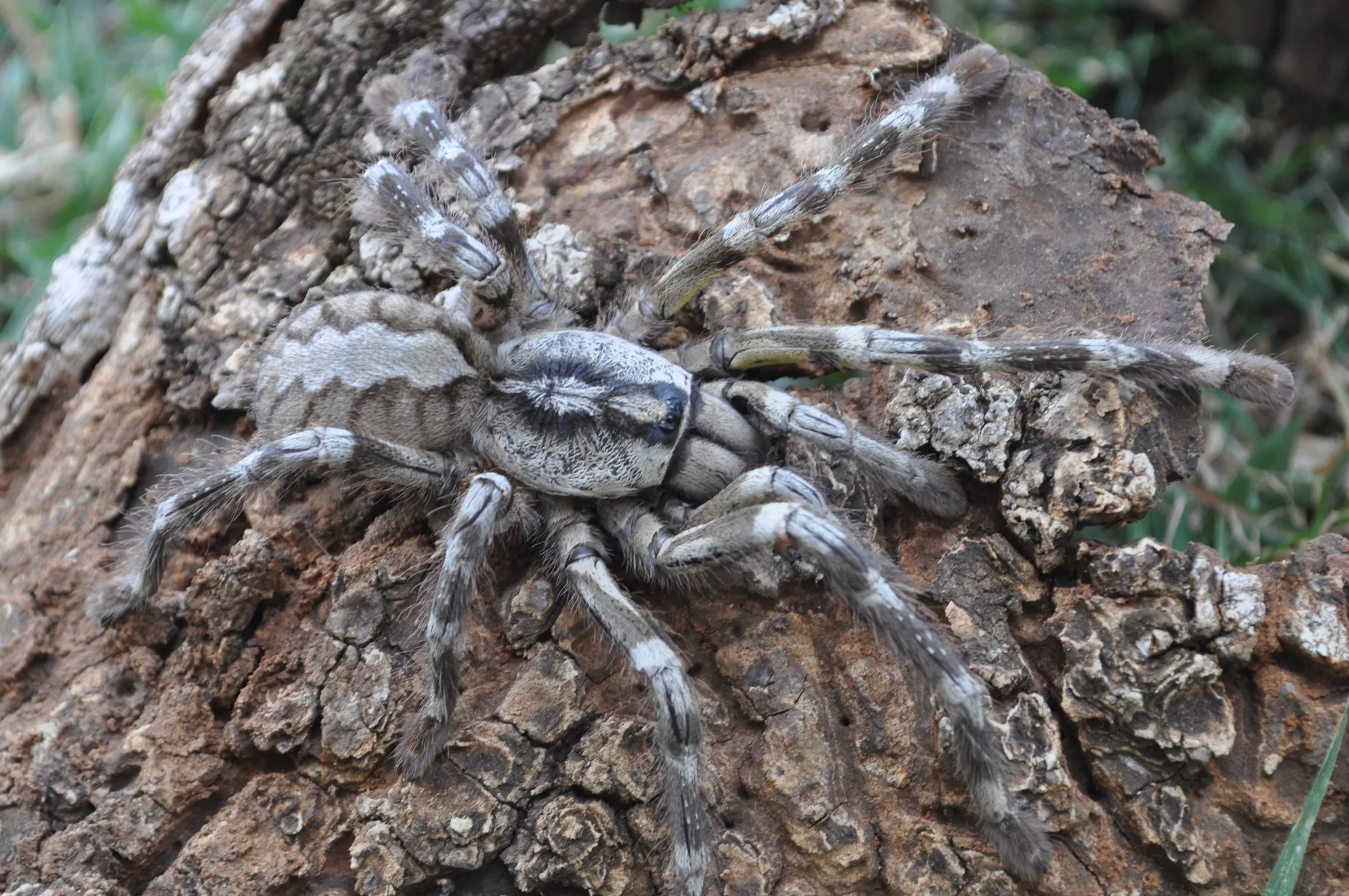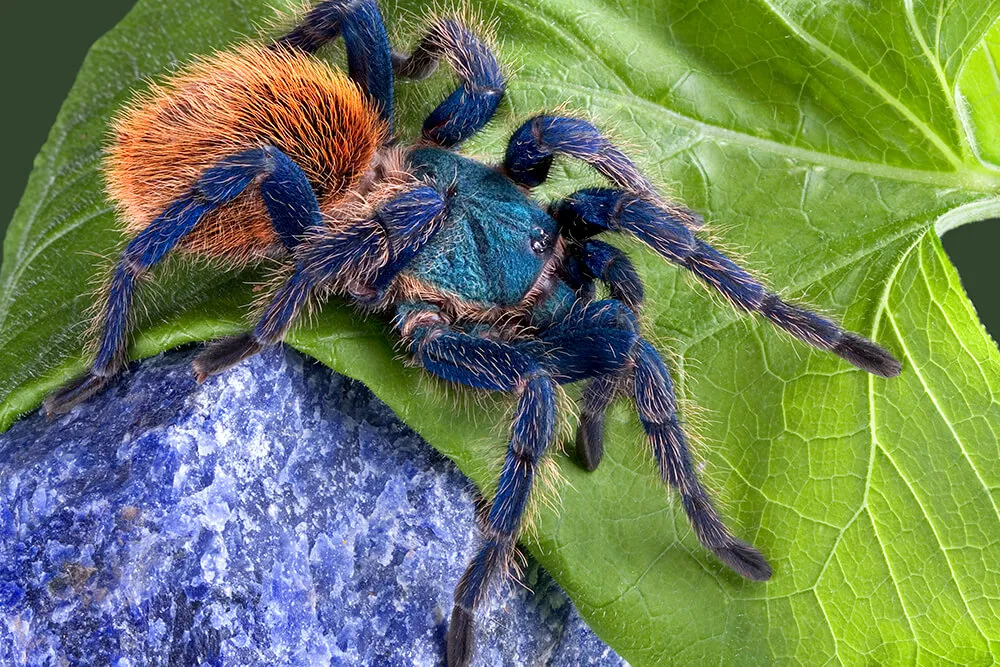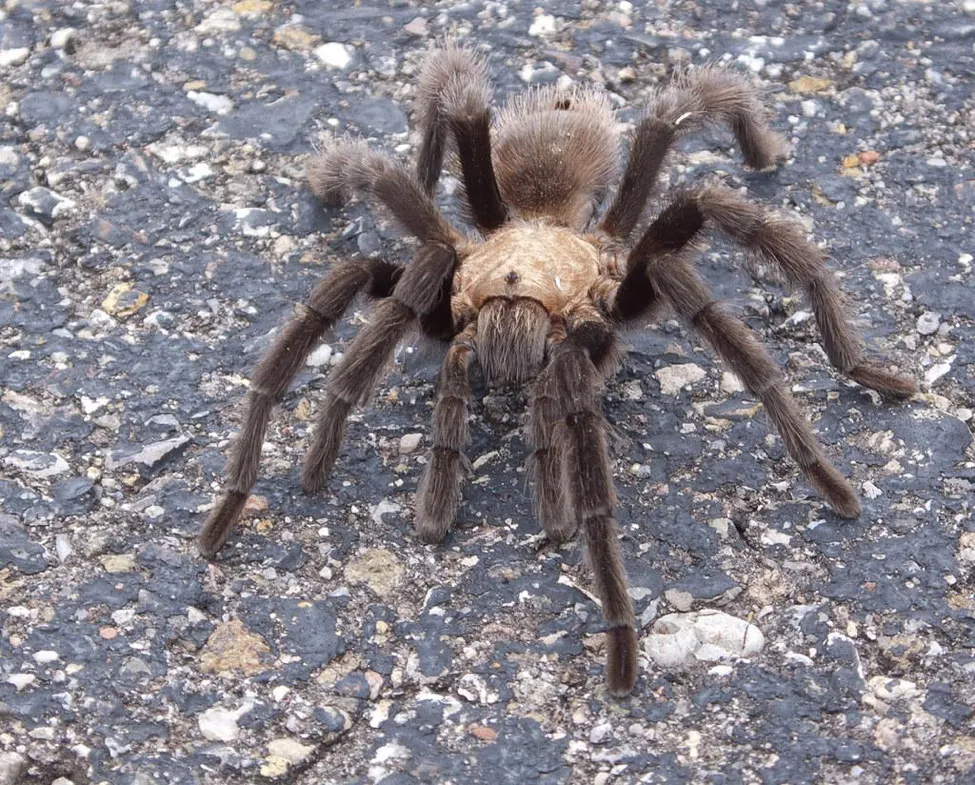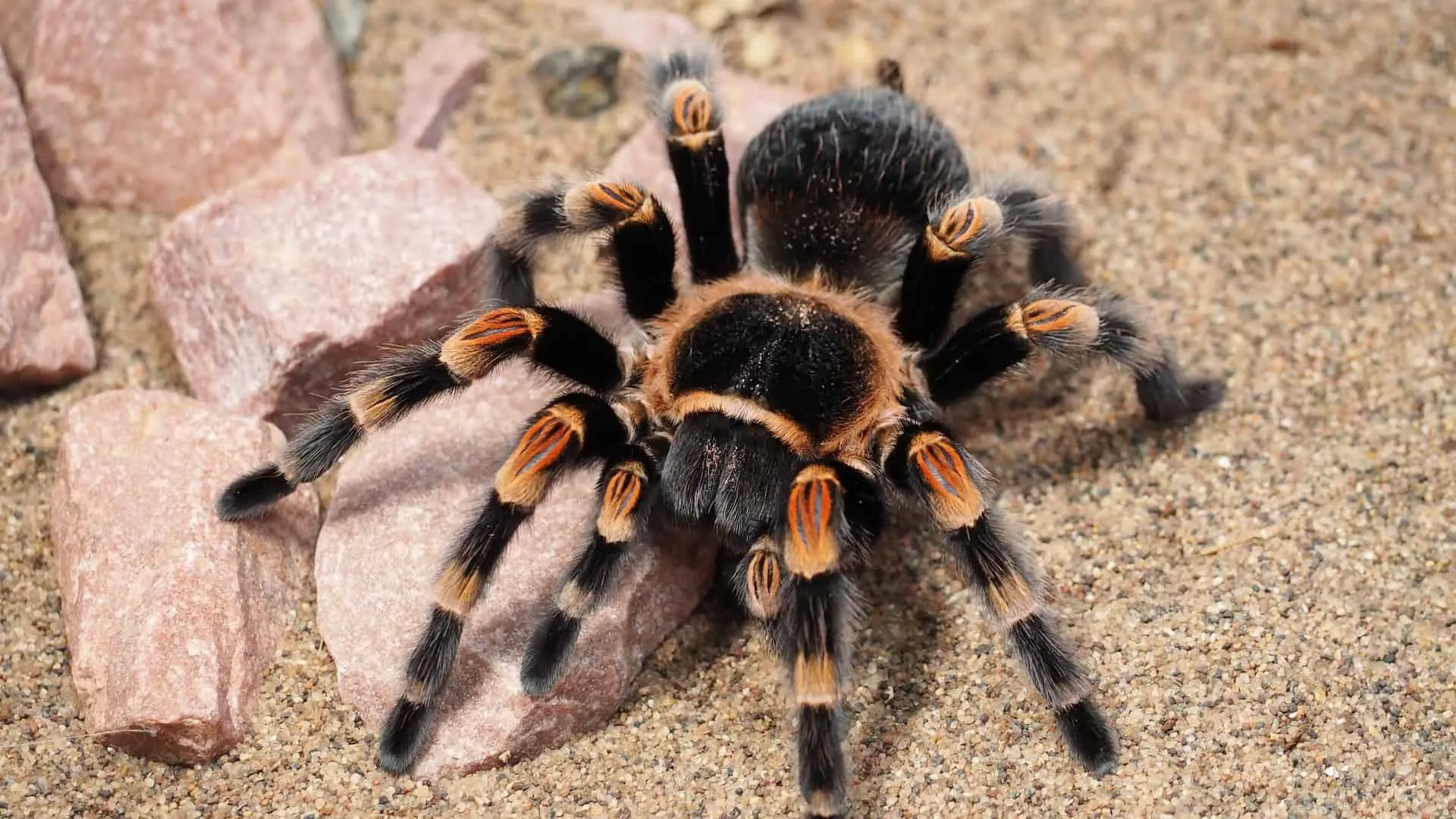What is a Tarantula?
Tarantulas are large, hairy spiders belonging to the Theraphosidae family. These fascinating creatures are known for their impressive size, often boasting leg spans that can exceed 10 inches. They are found in various habitats across the globe, from the deserts of the southwestern United States to the rainforests of South America. Unlike many other spider species, tarantulas are generally docile and not considered highly venomous to humans. Their imposing appearance often sparks curiosity and, sometimes, apprehension. They are nocturnal hunters, primarily feeding on insects, but larger species can also consume small lizards, rodents, and birds. Their life cycle involves molting, a process where they shed their exoskeleton to grow.
Tarantula Characteristics
Tarantulas exhibit several key characteristics that define them within the arachnid family. These include their eight legs, two body segments (cephalothorax and abdomen), and the presence of chelicerae (fangs) used for capturing prey. They possess spinnerets at the end of their abdomen, which they use to produce silk for various purposes, such as creating webs for shelter or lining their burrows. The body of a tarantula is covered in a hard exoskeleton, providing protection and support. They also have specialized hairs, called setae, that can be used for defense. These hairs can be urticating, meaning they cause irritation upon contact. Their diverse coloration and patterns allow them to blend into their environments, offering camouflage from predators and prey alike.
Body Structure

The body structure of a tarantula is fundamentally different from that of an insect. The tarantula’s body is divided into two main parts: the cephalothorax (also known as the prosoma), which is the fused head and thorax, and the abdomen (opisthosoma). The cephalothorax houses the tarantula’s eyes, mouthparts (including the chelicerae), and legs. The abdomen contains the digestive and reproductive organs, as well as the spinnerets. The arrangement of these body parts, including the presence of pedipalps (leg-like appendages used for sensing and manipulating prey), is crucial in classifying them as arachnids. This two-part body plan is a significant distinction from insects, which have a three-part body plan (head, thorax, and abdomen).
Exoskeleton and Molting
Like all arachnids, tarantulas have an exoskeleton, a hard, protective outer layer made of chitin. This exoskeleton provides support and protection, but it does not grow. As the tarantula grows, it must shed its exoskeleton through a process called molting, or ecdysis. During molting, the tarantula creates a new, larger exoskeleton beneath its old one. The old exoskeleton then splits open, and the tarantula wriggles free, leaving behind its cast-off shell. The new exoskeleton is initially soft, making the tarantula vulnerable. It gradually hardens over time. This process allows the tarantula to increase in size. The frequency of molting depends on the tarantula’s age and growth rate, with juveniles molting more often than adults. This process is vital for their growth and survival.
Arachnid vs Insect
The key distinction between arachnids (like tarantulas) and insects lies in their fundamental body structure and characteristics. Insects belong to the class Insecta, while arachnids belong to the class Arachnida. This means they are classified under different groups within the animal kingdom. The differences between the two groups are numerous and significant, impacting their physiology, behavior, and ecological roles. Understanding these differences helps in properly classifying tarantulas. Misidentification can lead to incorrect assumptions about their biology and needs. The following sections delve into these differences, highlighting the key features that separate these two groups of arthropods.
Key Differences Between Arachnids and Insects

The most significant differences between arachnids and insects are found in their physical structure. Arachnids, including spiders, scorpions, and mites, generally have two body segments: the cephalothorax and the abdomen. They have eight legs, no antennae, and simple eyes. Insects, on the other hand, have three body segments: the head, thorax, and abdomen. They have six legs, one pair of antennae, and compound eyes. Additionally, insects often have wings in the adult stage. The way they breathe, through book lungs (arachnids) or spiracles (insects), also differs. These distinctions are fundamental to their classification and reflect the different evolutionary paths of these two groups of arthropods. Comparing a tarantula to an insect will highlight these differences more clearly.
Number of Legs
One of the most obvious differences is the number of legs. Insects have six legs, which are attached to their thorax. This arrangement is a defining characteristic of the insect class. Tarantulas, like all arachnids, have eight legs. The eight legs are attached to the cephalothorax, giving them a different gait and movement style than insects. This difference in the number of legs is a quick way to distinguish between the two groups. While some insects may appear to have more or fewer legs due to mutations or injuries, the basic number of legs is a key identifier for classification.
Body Segmentation
Body segmentation also plays a crucial role in differentiating arachnids from insects. Insects exhibit a three-part body structure: head, thorax, and abdomen. Each segment has specific functions. The head contains the eyes, antennae, and mouthparts. The thorax supports the legs and wings. The abdomen houses the digestive and reproductive systems. Tarantulas, in contrast, have a two-part body structure: the cephalothorax and the abdomen. This fusion of the head and thorax into a single unit (the cephalothorax) is a defining characteristic of arachnids. This difference in body segmentation impacts the way these creatures move, eat, and perceive their environment.
Antennae

Antennae are sensory appendages found on the heads of insects. They are used for detecting odors, sensing vibrations, and navigating their environment. Insects have one pair of antennae. Tarantulas and other arachnids do not have antennae. Instead, they use other sensory organs, like their hairs and pedipalps (leg-like appendages near their mouth) to perceive their surroundings. The absence of antennae is a significant marker that immediately sets arachnids apart from insects, as it reflects different sensory strategies. This absence is easily noticeable and is a primary characteristic for quick identification.
Fact 1 Tarantulas Belong to Arachnids
The first and most important fact is that tarantulas belong to the class Arachnida, not Insecta. This classification places them alongside spiders, scorpions, mites, and ticks. Their physical characteristics, such as the number of legs (eight), two-part body structure, and lack of antennae, align perfectly with the arachnid classification. This fundamental difference is a core element in understanding the biology of tarantulas and their place in the ecosystem. They share common ancestors and evolutionary traits, making them fundamentally different from insects.
Fact 2 Insects Have Six Legs
Insects are easily recognized by their six legs, a defining feature of the class Insecta. These legs are attached to the thorax, the middle segment of their three-part body. The number of legs is a simple, yet highly effective, way to distinguish insects from arachnids like tarantulas, which have eight legs. This difference highlights a fundamental evolutionary divergence, as the body plan and locomotion methods differ greatly. Observing the leg count is one of the fastest ways to determine if a creature is, or is not, an insect.
Fact 3 Body Segmentation is Different

As mentioned previously, insects have a three-part body plan: head, thorax, and abdomen. Tarantulas, and arachnids in general, have a two-part body plan: a cephalothorax (fused head and thorax) and an abdomen. This difference in body segmentation is a critical factor in differentiating the two groups. The insect body plan allows for greater specialization, with different segments dedicated to specific functions like locomotion, sensory input, and digestion. The tarantula body plan is more consolidated, with the cephalothorax serving as a central hub for many functions. This difference in body structure influences their movement, feeding habits, and overall biology.
Fact 4 Antennae Are Absent in Tarantulas
One of the easiest ways to tell if a creature is an insect is to look for antennae. Insects use antennae to sense their environment. Tarantulas, as arachnids, do not possess antennae. This lack of antennae is a key visual difference. They use their other sensory organs such as hairs and palps, to navigate. The absence of antennae and presence of eight legs instantly classifies the creature as an arachnid. This is a clear indication that a tarantula is not an insect.
Fact 5 Tarantulas Breathe Differently
Tarantulas breathe using book lungs, while insects breathe through spiracles. Book lungs are stacked, folded structures inside the abdomen, facilitating gas exchange. Insects use a tracheal system of spiracles and tubes to deliver oxygen to their cells. This fundamental difference in respiratory systems reflects the evolutionary distance between the two groups. The differences in these systems are significant, and is one way to tell the two groups apart from each other. The way in which they breathe impacts their energy levels and how they can function in different environments.
Why Does it Matter? Understanding the Classification

Understanding the classification of tarantulas and insects is important for several reasons. It helps us appreciate the diversity of life on Earth and understand the evolutionary relationships between different species. Correct classification helps scientists study these creatures and learn about their biology, behavior, and ecology. Accurate classification is also critical for conservation efforts. It ensures appropriate care and understanding of their role in the environment. Additionally, it provides a framework for understanding ecological interactions. This knowledge is essential for biodiversity conservation and ecosystem management.
The Ecological Roles of Tarantulas and Insects
Both tarantulas and insects play vital roles in their respective ecosystems. Tarantulas are primarily predators, helping to control insect populations. They are also prey for larger animals, such as birds, lizards, and mammals. They contribute to nutrient cycling through decomposition. Insects are a huge part of the food web, serving as food for a wide array of animals, from birds and reptiles to amphibians and mammals. They are pollinators, essential for the reproduction of many plants, and are involved in the decomposition process, breaking down organic matter. Both groups contribute to the health and stability of ecosystems. Their complex interactions ensure a balanced environment. Each group performs unique functions, emphasizing their significance in the overall ecological framework.
Conclusion
In conclusion, while tarantulas and insects share the characteristic of being arthropods, they are distinct groups of organisms. Tarantulas belong to the class Arachnida, distinguished by their eight legs, two-part body structure, and lack of antennae. Insects, on the other hand, belong to the class Insecta, defined by their six legs, three-part body structure, and presence of antennae. The key differences between arachnids and insects highlight their unique evolutionary pathways, anatomical features, and ecological roles. Understanding these distinctions is crucial for accurate identification, scientific research, and conservation efforts. So, to answer the question: No, a tarantula is not an insect; it is an arachnid, and a fascinating creature at that!
